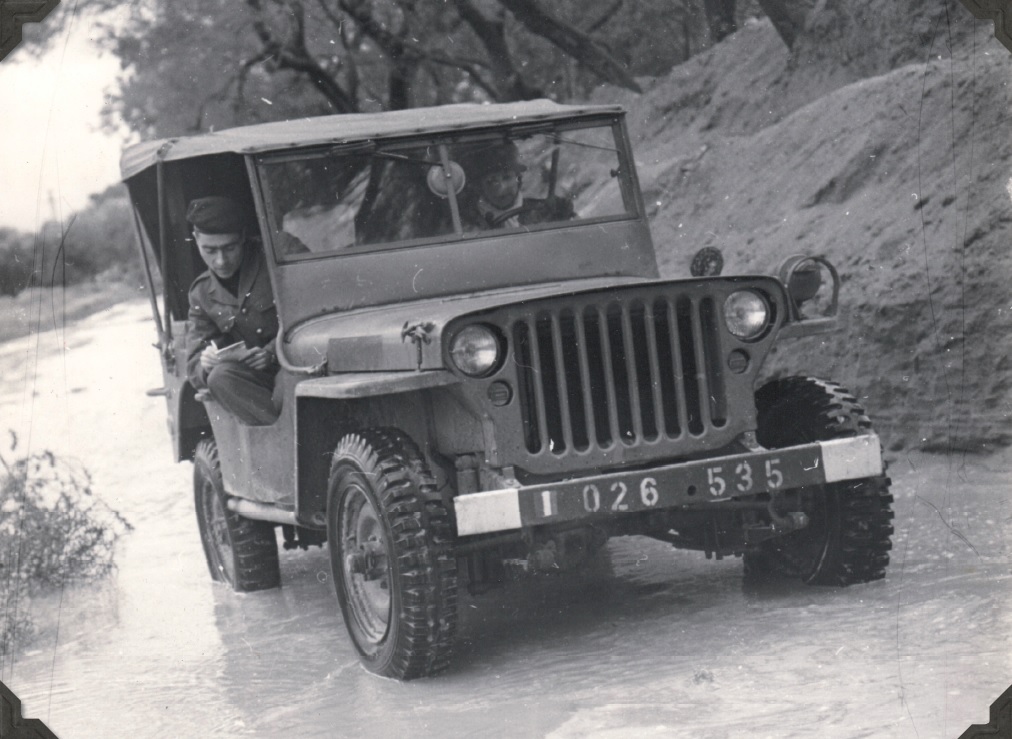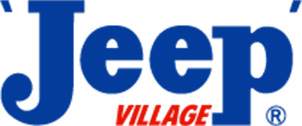
History of the Willys MB became "Jeep"
The Calm Before the Storm
In the late 1930s, anticipating an impending conflict in Europe, the United States, which had just re-elected Franklin D. Roosevelt for the third time, decided to modernize its military equipment, especially its vehicles, which mainly consisted of Ford Model Ts, motorcycles, and sometimes even horses when the roads were impassable.
The idea of a 4x4 vehicle was already in the minds of the technical committee of the U.S. Army's equipment, with technology that had been in existence since the 1900s, almost since the beginning of the history of automobiles. Although many now refer to the Willys MB as the first "off-road" vehicle, the first light 4x4 off-road vehicle appeared in 1936 in Japan, produced by the Tokyu Kurogane Kogyo company, known as the Kurogane Type 95, nicknamed the "Daruma", shortly after the Mitsubishi PX33 of 1934, which was the first four-wheel-drive sedan.
.jpg)
For the One that Would Liberate Europe
It was on July 11, 1940, with the situation in Europe shifting, that the U.S. Army issued a request for proposals to 135 companies in the country for the design of a light reconnaissance and liaison vehicle called the "General Purpose Vehicle", literally a "multi-purpose vehicle." With proposals due on July 22, 1940, the specifications included a rectangular body, four-wheel drive, three bucket seats, a wheelbase of less than 75 inches, a height of less than 36 inches, a load capacity of 600 pounds, and a total weight of less than 1300 pounds.
These constraints inevitably limited the number of participants: only two manufacturers responded to the request for proposals: American Bantam and Willys-Overland. Against all odds, it was American Bantam that won the contract, being the only manufacturer willing to meet the U.S. Army's incredibly tight deadlines of producing a prototype in 49 days and 70 test vehicles in 75 days.

This is how the Bantam BRC-60 was delivered on September 23, 1940, for evaluation, a small 4x4 designed by the genius Karl Probst, using as many parts as possible from Austin. However, the military situation and the future needs of the U.S. Army required mass production that American Bantam could not handle. Realizing this reality and the urgency, Probst's plans were passed on to Willys-Overland and Ford, which re-entered the selection of manufacturers. In October 1940, Willys-Overland presented its Quad, and Ford joined in with its massive production capabilities and its Pygmy, designed by Charles Sorensen.


Faced with the three vehicles and under the pressure of a worsening situation, especially in Asia, the U.S. Army decided to approve the prototypes of all three manufacturers, despite the fact that the models exceeded the 1300-pound limit imposed by the specifications. After a heated debate between different parties regarding favoritism toward Ford and Willys-Overland over Bantam, the undersecretary finally authorized the purchase of 1,500 pre-series units from all three manufacturers.
The Best of the Three
At the small manufacturer American Bantam, the BRC-60 improved and became the BRC-40; at Willys-Overland, the Quad became the MA; and at the giant Ford, the Pygmy became the GP. Production of the pre-series began, and from January to July 1941, approximately 2,605 BRC-40s were produced by Bantam, 1,555 MAs by Willys-Overland (many of which went to the USSR), and 4,458 GPs by Ford.



Military logistics and urgency compelled the U.S. Army to standardize everything, to bring together the best of the three in order to offer the best 4x4 light transmission vehicle and to produce it on a massive scale as quickly as possible. The Willys MA was chosen as the model, mainly because of its more powerful engine, the famous L4-134 Go-Devil, developed by Delmar "Barney" Roos, which had 60 horsepower and 105 foot-pounds of torque. However, the military demanded numerous modifications from the GP and BRC-40 models to finally have the perfect and long-awaited vehicle for an inevitable war.
As you can see in the photos, there is a standardization of equipment: handles around the body, front and rear Dana axles, "military" tires instead of agricultural tires, lighting protected by the grille, and more.
The true strength of the American effort lay in industrialization. "General Purpose" made complete sense with this logistical logic, allowing for massive and rapid production of a standardized vehicle with an estimated service life of 6 months, unlike the German army, which chose to have a specific vehicle for each application.
"One vehicle for everything, one training for all, one Jeep for each."
Anecdote: Several parts, such as the fuel filter and ignition points, are similar between the 'Jeep,' Dodge WC, and GMC.
The Legend of the "Jeep" is Born
Willys-Overland received its first order for 16,000 Willys MBs in the middle of 1941, but it quickly became clear that the factory alone could not meet the military's needs. Ford and its five factories were then called upon to produce the MB under license: It would be called the GPW (GP for its original vehicle and W for Willys' license). Urgency was crucial as the United States entered the war in December 1941 after the attack on Pearl Harbor in Hawaii. From then on, production reached a tremendous industrial scale !

To further standardize the Jeep, Willys, which had previously used a forged iron grille known as the "Slat Grill" (25,808 units), adopted the stamped steel grille used by the GPW. Ford, true to itself, its marketing, and its power, made some small modifications to reinforce certain parts of the MB or to add Ford details to differentiate it and make its "F" prominent in people's minds.

Thus, from late 1941 for Willys-Overland and early 1942 for Ford, until mid-1942, the Jeep would be produced in approximately 640,000 units (361,339 MBs and 277,896 GPWs) and would traverse all the battlefields under the American, British, Canadian, Soviet, Australian, and French flags.

Ironically, the big loser in this story was its initiator, American Bantam, which built only 2,642 Jeeps out of the 647,070 produced during World War II. Starting in 1942, Bantam even focused on producing the quarter-ton trailer that equipped all the Jeeps.
The Origin of the Name 'Jeep'
But let's go back to the term "Jeep": why was it named that way? Some say that the word "Jeep" comes from the pronunciation of "GP" (djipi in English) for "General Purpose." Others claim that the vehicle was named after the agile little creature from the Popeye cartoon, "Eugene the Jeep," created in 1936.

Less commonly, some suggest that a "Jeep" has colloquially referred to any military vehicle undergoing testing since World War I, including new, untested vehicles as described by Major E.P. Hogan in March 1941 in the military magazine Quartermaster Review.
Finally, another version suggests that the acronym "Just Enough Essential Parts" is also a likely explanation.
A Successful Challenge
It was on June 6, 1944, at dawn on a historic day, that hundreds of Jeeps were unloaded onto the Normandy beaches from landing craft.
"The four weapons that contributed the most to winning the war are: the Jeep, the Douglas C-47, the bazooka, and the atomic bomb."
- Dwight D. Eisenhower
The Jeep achieved worldwide success due to its performance on the battlefield and its liberating image, from the Western to the Eastern parts of Europe and vice versa.
In June 1950, Willys-Overland officially trademarked 'Jeep,' taking the paternity away from Bantam. It's clear that property rights during wartime didn't hold the same value as in peacetime. Although the word 'jeep' was trademarked, it remains the worldwide designation for a rugged all-terrain vehicle.
The Continued Legend
The thousands of Jeeps left by the Americans on the European continent were quickly put to use for the reconstruction of countries, especially in France from 1945 onwards, with preferential prices for farmers and the construction industry. Manufacturing licenses were even sold to 11 countries to produce Willys-Overland Jeeps.

The French Army's Hotchkiss M-201
In France, it was the company Hotchkiss that produced 27,628 units of the M-201. Mainly manufactured at the Stains factory in Seine-Saint-Denis under the responsibility of SOFIA (Société Financière Industrielle Automobile), corrections were made to the weak points of the Willys MB, such as the gearbox, windshield wipers, suspension, and chassis.
Also, to meet NATO standards and accommodate all radio equipment, the M-201 switched from 6 volts to 24 volts (starting with serial number 08961), with armored ignition.

But how did struggling Delahaye-Hotchkiss obtain the Jeep license ?
In 1923, after occupying various positions at the French plant in Saint-Denis, Henry J. Ainsworth (nephew of the general manager of Hotchkiss' British parent company) took charge of Hotchkiss' automobile department. In 1940, to escape the Nazis, Ainsworth left France for England and then went to the United States, where he joined the British mission to purchase military equipment. That's where he met Marcel Müller, a colleague of the commercial attaché at the French embassy.
Subsequently, Marcel Müller married Henry Ainsworth's secretary, which brought the two men closer as good friends. After the war, Marcel, who had become an American citizen to serve in the U.S. Army, worked in the automobile industry and became the head of Willys-Overland. Their friendship led to a professional collaboration in 1946 with an agreement giving Hotchkiss exclusive rights to build and sell Jeep models in France and the territories of the French Union. This resulted in the M-201, CJ-3B, JH-101, JH-102, HWL, and HLWD, while in the United States, Willys-Overland distributed the CJ-2A, CJ-3A, and CJ-3B with the "Jeep-Affiliate" label. After the CJ-5, Willys sold its Jeep activities to Kaiser.
Anecdote: Mitsubishi, which was a pioneer in off-road vehicles long before Willys-Overland, produced approximately 200,000 Jeep J3 vehicles from 1953 to 1998, the only Right Hand Drive (RHD) Jeep.
The Hotchkiss M-201 had a long and illustrious service, marking the generation of the 1960s and gradually being replaced starting from February 20, 1981, by the Peugeot P4 with its well-known XD Indenor engine, which was also offered in the M-201.
In total, it can be asserted that the small vehicle launched in 1940 resulted in a production of over 3 million units !
The market for collectible Jeeps is thriving, with several companies like ours offering new or New Old Stock (N.O.S) parts for military Jeep models, from the MB Slat Grill to the M38A1, as well as classic Jeep models ranging from the CJ-2A to the Wrangler JK, including the CJ-7.
